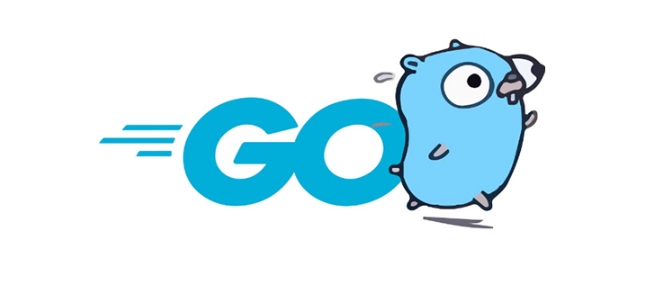Go Query Optimization Techniques for PostgreSQL/MySQL
Jul 19, 2025 am 03:56 AMTo optimize Go applications interacting with PostgreSQL or MySQL, focus on indexing, selective queries, connection handling, caching, and ORM efficiency. 1) Use proper indexing—identify frequently queried columns, add indexes selectively, and use composite indexes for multi-column queries. 2) Reduce data transfer—select only necessary columns, avoid SELECT *, paginate large datasets, and prevent N 1 queries with joins or batching. 3) Optimize connection handling—use a connection pool, set MaxOpenConns, MaxIdleConns, and ConnMaxLifetime appropriately. 4) Cache frequently accessed data—use Redis or Memcached, implement TTLs, and consider materialized views in PostgreSQL. 5) Manage ORM overhead—avoid unnecessary preloading, inspect generated queries, and prefer raw SQL when performance is critical.

When it comes to optimizing Go applications that interact with PostgreSQL or MySQL, the database layer is often where performance bottlenecks hide. The key isn't just writing clean Go code—it's understanding how your queries are executed and how your data is accessed.

Here’s what you can do to improve query performance in Go apps using PostgreSQL or MySQL.
Use Proper Indexing Strategically
One of the most common reasons for slow queries is missing or inefficient indexing. You might have a query that works fine with 100 rows but grinds to a halt at 100,000.

- Identify frequently queried columns, especially those used in WHERE, JOIN, and ORDER BY clauses.
- Add indexes selectively—too many indexes can slow down writes and take up unnecessary space.
- For composite queries (e.g., filtering by
user_idandcreated_at), consider composite indexes in the right order.
For example:
CREATE INDEX idx_user_created ON users (user_id, created_at);
Use EXPLAIN ANALYZE in PostgreSQL or EXPLAIN in MySQL to check if your query uses an index. If it says "Seq Scan" or "Using filesort", you probably need to revisit your indexing strategy.

Reduce Data Transfer with Selective Queries
Fetching more data than needed is a silent killer of performance. It increases memory usage on both the database and application side, and slows things down over the wire.
- Always specify only the columns you need instead of using
SELECT *. - Avoid fetching large text/blob fields unless absolutely necessary.
- Paginate results when dealing with large datasets using
LIMITandOFFSET, or cursor-based pagination for better scalability.
Example:
rows, err := db.Query("SELECT id, name FROM users WHERE status = $1 LIMIT 100", activeStatus)Also, avoid N 1 queries by batching or joining related data upfront. Tools like pgx for PostgreSQL or gorm for MySQL can help manage eager loading effectively.
Optimize Connection Handling
Even the fastest queries won’t help if your app is waiting for a connection from the pool.
- Set appropriate connection limits based on your database capacity.
- Reuse connections using a connection pool (like
database/sqlin Go). - Tune parameters such as
MaxOpenConns,MaxIdleConns, andConnMaxLifetime.
Example:
db, err := sql.Open("postgres", connString)
db.SetMaxOpenConns(25)
db.SetMaxIdleConns(25)
db.SetConnMaxLifetime(time.Minute * 5)Too many open connections can overwhelm your DB. Too few can create contention in high-load scenarios. Monitor actual usage and adjust accordingly.
Cache Frequently Accessed Data
Caching isn't just for HTTP layers—it's also powerful at the database level.
- Use Redis or Memcached to cache read-heavy data like configuration values or user profiles.
- Implement short TTLs for data that changes occasionally but not constantly.
- Consider materialized views in PostgreSQL if you're doing complex aggregations.
In Go, you can wrap query calls with a cache layer:
func getCachedUser(id string) (*User, error) {
val, _ := redisClient.Get(id).Result()
if val != "" {
var user User
json.Unmarshal([]byte(val), &user)
return &user, nil
}
// Fallback to DB
var user User
err := db.QueryRow("SELECT ...").Scan(...)
if err == nil {
redisClient.SetEx(id, ..., time.Minute*10)
}
return &user, err
}This reduces repeated queries and speeds up response times significantly.
Bonus: Watch Out for ORM Overhead
ORMs like GORM are convenient, but they can introduce overhead if not used carefully.
- Avoid automatic preloading unless you really need it.
- Be cautious with auto-generated queries—they may not be optimized.
- Prefer raw SQL or builder libraries like
squirrelorpgconnwhen performance matters.
If you're seeing unexpected query patterns, log what your ORM is actually sending to the database. Sometimes a simple refactor can cut query count by half.
Optimizing queries in Go doesn’t always mean rewriting everything—it’s usually about identifying and fixing a few critical points. Start with the slowest queries, use proper tools, and don’t ignore the basics like indexing and connection handling.
Most of these improvements are low-effort compared to the gains they bring.
The above is the detailed content of Go Query Optimization Techniques for PostgreSQL/MySQL. For more information, please follow other related articles on the PHP Chinese website!

Hot AI Tools

Undress AI Tool
Undress images for free

Undresser.AI Undress
AI-powered app for creating realistic nude photos

AI Clothes Remover
Online AI tool for removing clothes from photos.

Clothoff.io
AI clothes remover

Video Face Swap
Swap faces in any video effortlessly with our completely free AI face swap tool!

Hot Article

Hot Tools

Notepad++7.3.1
Easy-to-use and free code editor

SublimeText3 Chinese version
Chinese version, very easy to use

Zend Studio 13.0.1
Powerful PHP integrated development environment

Dreamweaver CS6
Visual web development tools

SublimeText3 Mac version
God-level code editing software (SublimeText3)
 How does the switch statement work in Go?
Jul 30, 2025 am 05:11 AM
How does the switch statement work in Go?
Jul 30, 2025 am 05:11 AM
Go's switch statement will not be executed throughout the process by default and will automatically exit after matching the first condition. 1. Switch starts with a keyword and can carry one or no value; 2. Case matches from top to bottom in order, only the first match is run; 3. Multiple conditions can be listed by commas to match the same case; 4. There is no need to manually add break, but can be forced through; 5.default is used for unmatched cases, usually placed at the end.
 Using the Context Package in Go for Cancellation and Timeouts
Jul 29, 2025 am 04:08 AM
Using the Context Package in Go for Cancellation and Timeouts
Jul 29, 2025 am 04:08 AM
Usecontexttopropagatecancellationanddeadlinesacrossgoroutines,enablingcooperativecancellationinHTTPservers,backgroundtasks,andchainedcalls.2.Withcontext.WithCancel(),createacancellablecontextandcallcancel()tosignaltermination,alwaysdeferringcancel()t
 Building Performant Go Clients for Third-Party APIs
Jul 30, 2025 am 01:09 AM
Building Performant Go Clients for Third-Party APIs
Jul 30, 2025 am 01:09 AM
Use a dedicated and reasonably configured HTTP client to set timeout and connection pools to improve performance and resource utilization; 2. Implement a retry mechanism with exponential backoff and jitter, only retry for 5xx, network errors and 429 status codes, and comply with Retry-After headers; 3. Use caches for static data such as user information (such as sync.Map or Redis), set reasonable TTL to avoid repeated requests; 4. Use semaphore or rate.Limiter to limit concurrency and request rates to prevent current limit or blocking; 5. Encapsulate the API as an interface to facilitate testing, mocking, and adding logs, tracking and other middleware; 6. Monitor request duration, error rate, status code and retry times through structured logs and indicators, combined with Op
 how to properly copy a slice in go
Jul 30, 2025 am 01:28 AM
how to properly copy a slice in go
Jul 30, 2025 am 01:28 AM
To correctly copy slices in Go, you must create a new underlying array instead of directly assigning values; 1. Use make and copy functions: dst:=make([]T,len(src));copy(dst,src); 2. Use append and nil slices: dst:=append([]T(nil),src...); both methods can realize element-level copying, avoid sharing the underlying array, and ensure that modifications do not affect each other. Direct assignment of dst=src will cause both to refer to the same array and are not real copying.
 How to use template.ParseFS with go embed?
Jul 30, 2025 am 12:35 AM
How to use template.ParseFS with go embed?
Jul 30, 2025 am 12:35 AM
Use the template.ParseFS and embed package to compile HTML templates into binary files. 1. Import the embed package and embed the template file into the embed.FS variable with //go:embedtemplates/.html; 2. Call template.Must(template.ParseFS(templateFS,"templates/.html")))) to parse all matching template files; 3. Render the specified in the HTTP processor through tmpl.ExecuteTemplate(w,"home.html", nil)
 Working with Time and Dates in Go
Jul 30, 2025 am 02:51 AM
Working with Time and Dates in Go
Jul 30, 2025 am 02:51 AM
Go uses time.Time structure to process dates and times, 1. Format and parse the reference time "2006-01-0215:04:05" corresponding to "MonJan215:04:05MST2006", 2. Use time.Date(year, month, day, hour, min, sec, nsec, loc) to create the date and specify the time zone such as time.UTC, 3. Time zone processing uses time.LoadLocation to load the position and use time.ParseInLocation to parse the time with time zone, 4. Time operation uses Add, AddDate and Sub methods to add and subtract and calculate the interval.
 What are runes in Go?
Jul 31, 2025 am 02:15 AM
What are runes in Go?
Jul 31, 2025 am 02:15 AM
AruneinGoisaUnicodecodepointrepresentedasanint32,usedtocorrectlyhandleinternationalcharacters;1.Userunesinsteadofbytestoavoidsplittingmulti-byteUnicodecharacters;2.Loopoverstringswithrangetogetrunes,notbytes;3.Convertastringto[]runetosafelymanipulate
 How to import a local package in Go?
Jul 30, 2025 am 04:47 AM
How to import a local package in Go?
Jul 30, 2025 am 04:47 AM
To import local packages correctly, you need to use the Go module and follow the principle of matching directory structure with import paths. 1. Use gomodinit to initialize the module, such as gomodinitexample.com/myproject; 2. Place the local package in a subdirectory, such as mypkg/utils.go, and the package is declared as packagemypkg; 3. Import it in main.go through the full module path, such as import "example.com/myproject/mypkg"; 4. Avoid relative import, path mismatch or naming conflicts; 5. Use replace directive for packages outside the module. Just make sure the module is initialized






